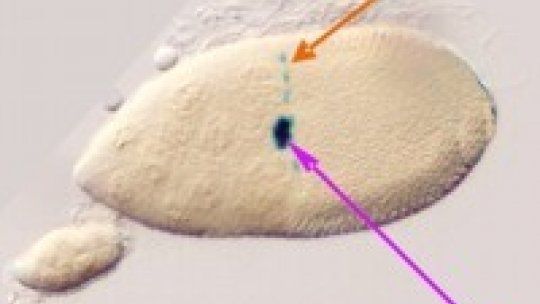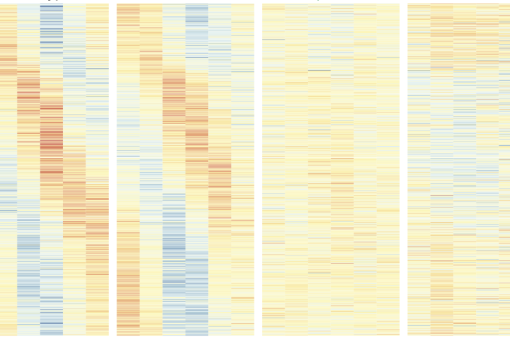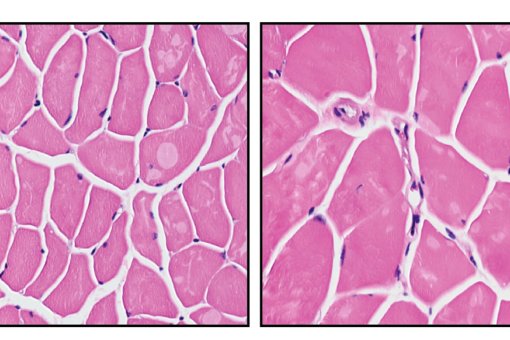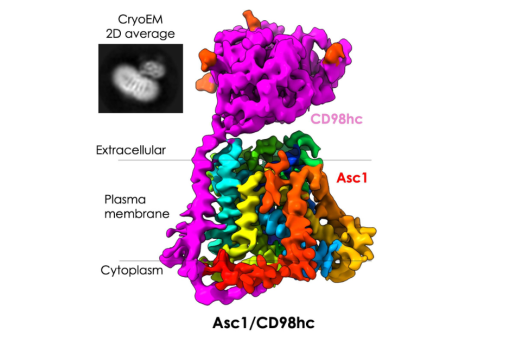Images
Contact

Research conducted by investigators from IRB Barcelona appears this week in Proceedings of the National Academy of Sciences PNAS.
Investigators from the Institute of Research in Biomedicine (IRB Barcelona) have identified a new signalling mechanism among cells in the fruit fly, Drosophila melanogaster. The researchers found that two independent groups of cells generate the same signal by different pathways and that these cells subsequently act together to send the signal to the target cell. In this manner, the receptor cell receives the signal from two distinct sources. The results of this study appear in this week advanced electronic issue of the journal PNAS.
Jordi Casanova (IRB Barcelona/CSIC) explains that different types of cells working together to send a message can be regarded as a “security measure designed to ensure that the signal reaches the receptor cell in the proper fashion, neither too weakly nor too strongly”. Using RNA interference techniques (RNAi), the researchers observed that it was necessary to disactivate the signal in both groups of cells in order to prevent the message from being sent. They also observed that overstimulating signal production (producing more of the signalling molecule) created problems in the receptor cell, causing it to develop incorrectly.
Researchers made the discovery by studying the behaviour of a gene called torso-like during the early stages of embryonic development of the Drosophila fly. Two groups of cells activated the same torso-like gene separately and by different mechanisms when they were still in separate compartments inside the Drosophila ovary. Subsequently, the cells migrated until they met and jointly signalled the target cell.
Marc Furriols, lead author of the study, explains that the torso-like gene activates a membrane receptor molecule that is specific to Drosophila, but that the molecule belongs to a receptor family (that includes, for example, the human growth factor), which also reacts when it receives an external signal. “This research describes a very signalling mechanism in the fly which is very basic. It gives us good insight into how these mechanisms work so that we can later manipulate and control them.
Many of these pathways and signalling systems have been observed throughout evolution and hence, studies with models such as the fruit fly, can provide further insight into how these signalling mechanisms work in humans.
Reference article:
Two distinct but convergent groups of cells trigger Torso receptor tyrosine Kinase activation by independently expressing torso-like
Marc Furriols, Gemma Ventura, and Jordi Casanova
PNAS epub ahead June 25-29 , 2007
IRB Barcelona
L’Institut de Recerca Biomèdica (IRB Barcelona) treballa per aconseguir una vida lliure de malalties. Desenvolupa una recerca multidisciplinària d’excel·lència per curar el càncer i altres malalties vinculades a l'envelliment. Treballa establint col·laboracions amb la indústria farmacèutica i els principals hospitals per fer arribar els resultats de la recerca a la societat a través de la transferència de tecnologia, i du a terme diferents iniciatives de divulgació científica per mantenir un diàleg obert amb la ciutadania. L’IRB Barcelona és un centre internacional que acull al voltant de 400 investigadors de més de 30 nacionalitats. Reconegut com a Centre d'Excel·lència Severo Ochoa des de 2011, és un centre CERCA i membre del Barcelona Institute of Science and Technology (BIST).




